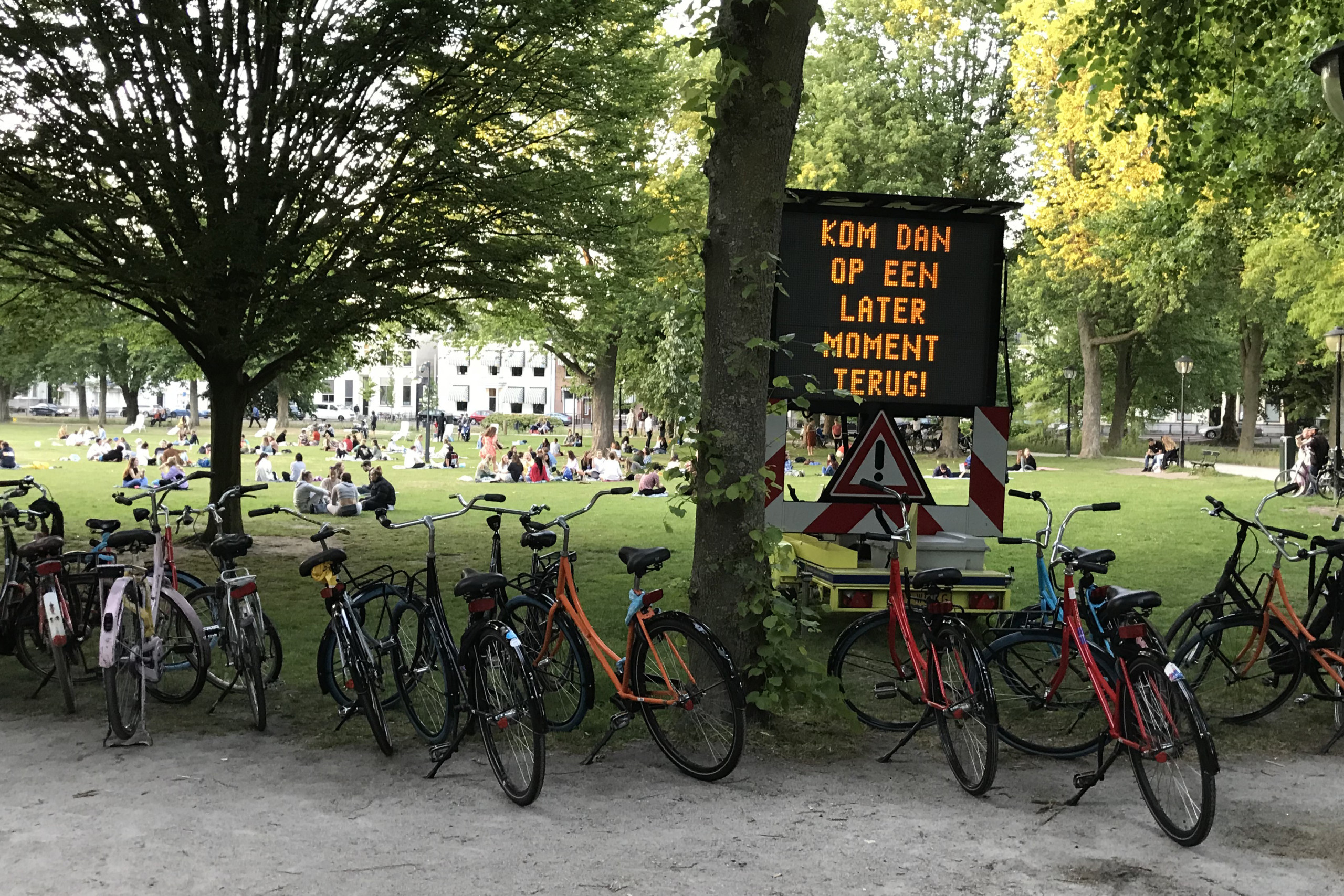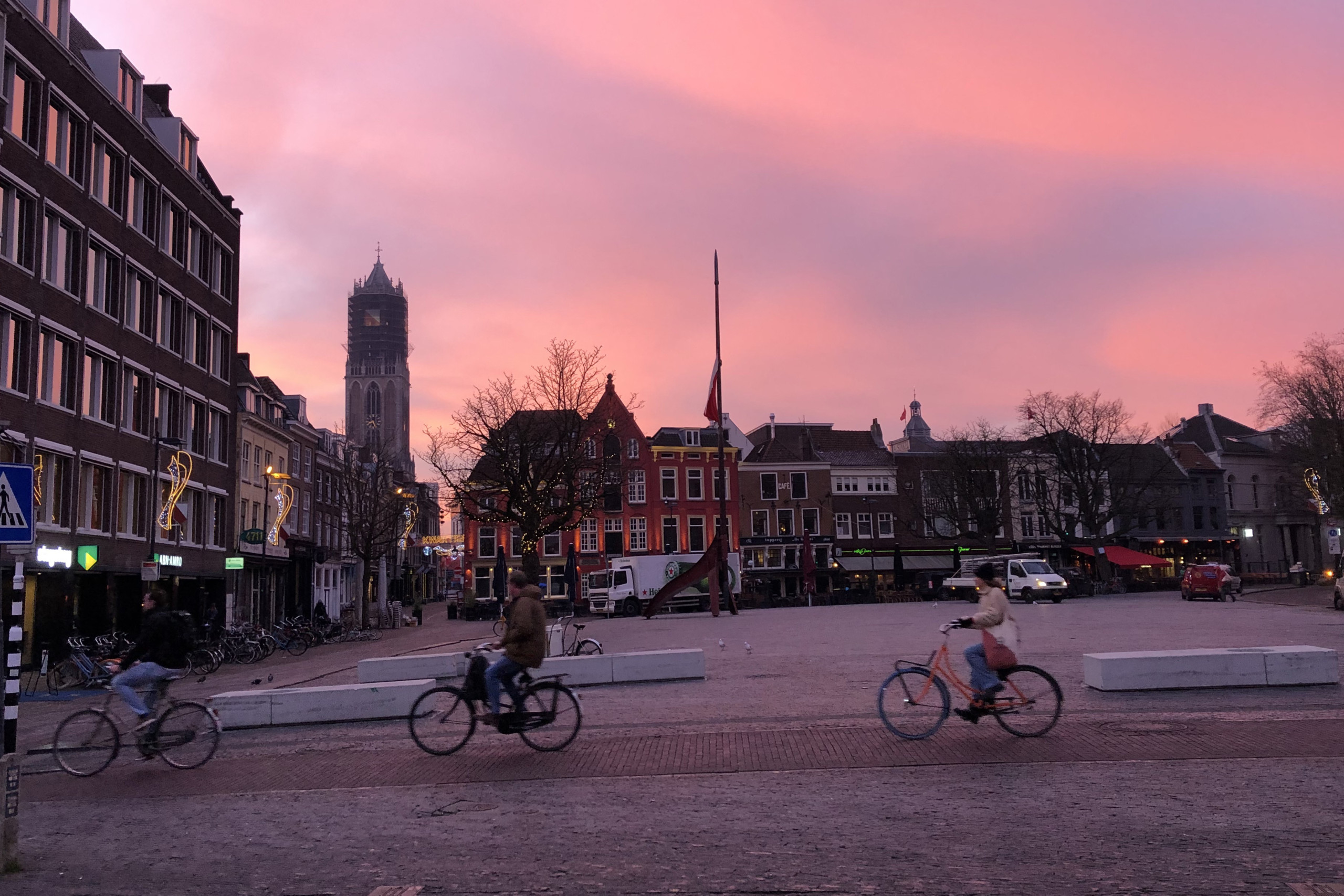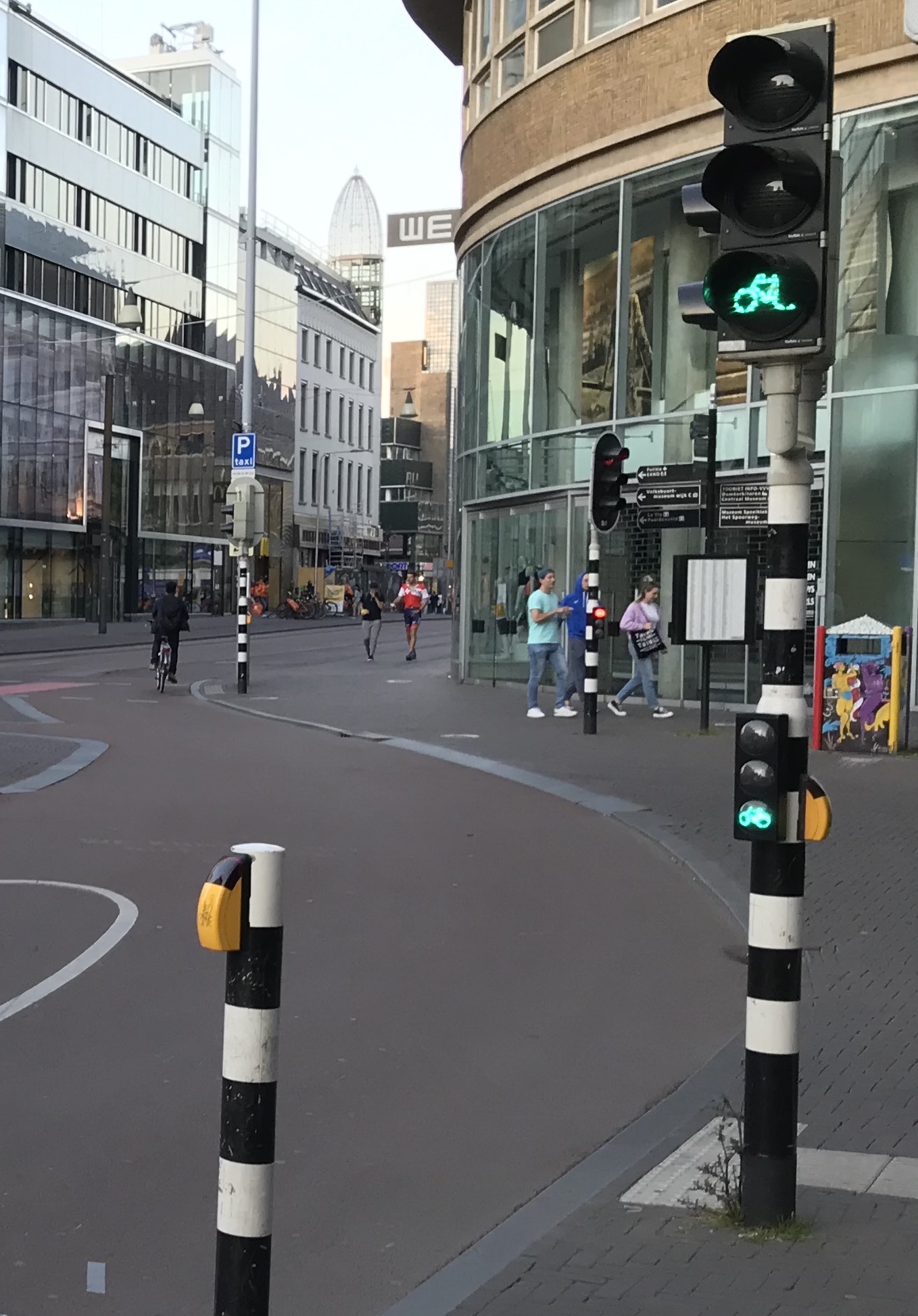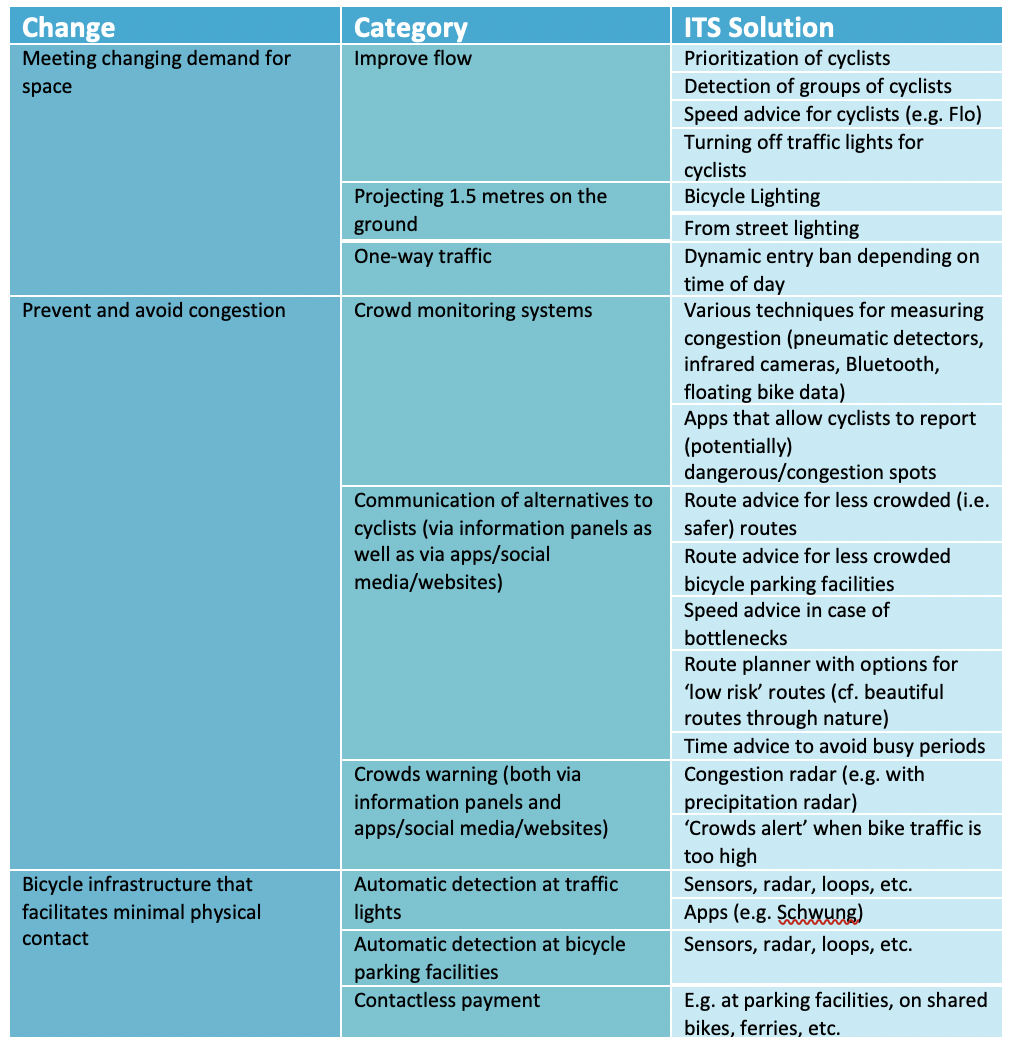COVID-19 / Developments / Innovation / ITS / Mobility / Mobility management / Technology
ITS and Bicycle: Corona-proof Cycling
The following was originally published in Dutch for Mobiliteits Platform and can be found HERE
As a result of the Corona crisis, we are now living in a 1.5-metre society throughout the Netherlands. Now that an increasing number of activities outside the home are allowed to take place as of 1 June, individual mobility will slowly increase again. In the immediate future, this will mainly be done by car and bicycle, as the capacity of the public transport remains limited for the time being. At the same time, more activities are making a greater claim of public space. Not only have terraces grown to accommodate more patrons outdoors, but also the number of people moving through and staying in parks and on roads have increased.

In order to steer these changes in the right direction, a variety of examples of new, corona-proof, bicycle policies in large cities are already being implemented. Where abroad so-called COVID-19 cycle paths are being developed, Dutch cities are concentrating more on school streets, setting up one-way traffic zones and closing streets to cars and sometimes cyclists as well. But can the government also take measures other than physical ones to facilitate corona-proof cycling?
Mobycon is closely involved in the Bicycles & ITS (BITS) project. Initiated by the Province of Overijssel and co-funded through Interreg North Sea Region, the project aims to make cycling more attractive by deploying ITS (Intelligent Transport Systems). We therefore wondered: to what extent could ITS be used to shape ‘Corona-proof’ cycling policy? In this article we describe the results of an internal brainstorm on this subject.

Why a 1.5-metre cycling policy?
On the one hand, a 1.5-metre cycling policy is necessary to keep the risk of infection low. At the same time, it helps keep society, and therefore the economy, running as much as possible. To achieve this, we need to enable people cycling with as little risk of contamination as possible.
Cycling is not only a space-efficient mode of transport, but it also contributes to an individual’s overall health and happiness, whether for recreation or to reach a destination. A 1.5-metre cycling policy therefore goes beyond an efficient traffic system. We want to give people more freedom, without sacrificing other people’s freedom and health. We also have to realise that not everyone has a car and not everyone can or dares to use the public transport, which means that for many people, cycling is the only option.
Desired changes
A corona-proof cycling policy has three aspects, which have more or less relevance depending on local circumstances:
Meeting the changing demand for space
When more people cycle, cycle paths gets busier, build ups are generated at traffic lights and bridges, and bicycle parking facilities become crowded (where capacity is already reduced due to the required 1.5-metre distance). In order to be able to cycle safely in the 1.5-metre society, this may mean that cyclists are given (more) priority than cars, that extra bicycle parking facilities are created in public spaces, or that stricter restrictions are imposed on where bicycles can be parked (in order to maintain sufficient walking space for pedestrians).
Prevent and avoid congestion
In order to prevent crowds, you must first understand the where, when and size of the crowds on bicycle routes and in bicycle parking facilities. Then you have to offer the cyclist alternatives, for example, by identifying under-utilised bicycle parking facilities, quiet bicycle routes, or by advising them to travel at a different time and possibly (partially) working at home if that is an option. Here it is important that the measures are flexible because situations can change quickly.
Avoid physical contact with bicycle infrastructure
In order to minimise the risk of transmission of the virus, the use of the infrastructure by cyclists should be as automated and contactless as possible. This includes, for example, beg buttons, bicycle parking facilities, payment machines.

ITS solutions
Based on the above desired changes, we have identified the following typologies for possible ITS solutions for cycling in the 1.5-metre society:

The above overview is just an initial exploration of ITS solutions that can contribute to a 1.5-metre cycling policy. We can already see, for example, that the Municipality of Amsterdam is already adapting its traffic light phases to allow more frequent and/or longer crossing times for cyclists as a potential measure. In the Municipality of Zwolle they are considering a dynamic bicycle parking referral system.
Regardless of measure, further study into the cost effectiveness of the measures is necessary, including the latest insights into the risk of infection (e.g. How long are beg buttons contagious? Should the same distance standards be applied in covered and open bicycle parking facilities?). With no certainty about how long the current Corona crisis will last, it is also good to see to what extent the chosen solutions will still be useful in the longer term. For instance, a monitoring system that will also provide useful information for bicycle policy at a later stage.
In any case, we are convinced that ITS, just like physical solutions, communication and education, offers opportunities in addressing these new Corona challenges. If you’re interested in how ITS can contribute to cycling in general, read our blog in Verkeerskunde.

Ronald Jorna and Robin Kleine are Mobility Experts at Mobycon working collaboratively with Bicycles & ITS

Ronald Jorna
‘ICT makes the transport chain more intelligent, which contributes to more efficient and sustainable transportation. As a staunch advocate for smart travel, I investigate how ICT can increase the safety and comfort of cyclists. European cooperation and knowledge sharing are important to this work. The choice for a certain modality is a trade-off between time, cost, quality of life and health.’
Senior Advisor ICT and Freight Specialist
r.jorna@mobycon.com

